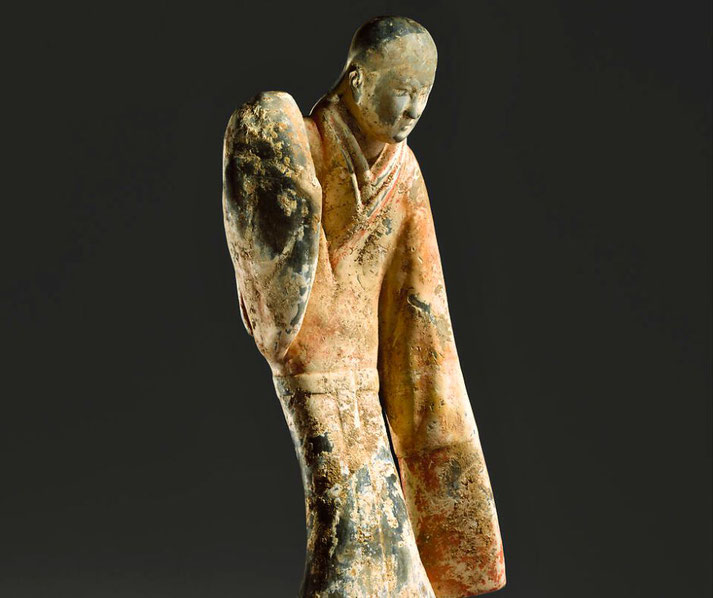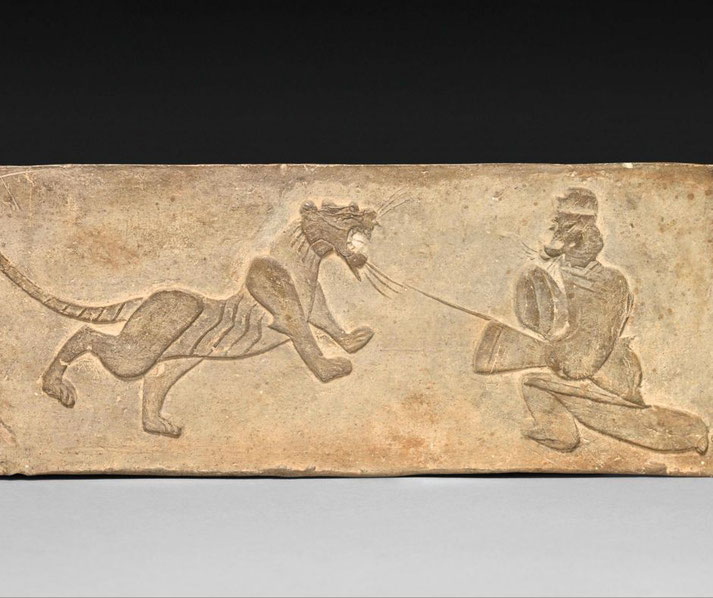What was it like to live in ancient China?

If your morning began with the hiss of porridge cooking on clay coals and the distant thump of temple drums, congratulations, you’ve just travelled to one of the world’s longest lasting ancient cultures.
In those alleyways, the smell of fermented soy and burning incense mixed around street performers who told stories of fire-breathing phoenixes to a gathering crowd.
Inside the palace walls, emperors planned major projects: canals to control rivers, civil-service exams to select scholars, and careful record-keepers who wrote down every tax receipt.
Meanwhile, ordinary people traded duck eggs and fine hemp cloth, living far from the throne rooms they would never see.
The geography and climate
The geography of ancient China played a key role in shaping its civilisation, which influenced everything from agricultural practices and cultural development to trade and warfare.
Central to ancient China were the fertile plains of the Yellow River (Huang He) and the Yangtze River (Chang Jiang).
They provided the necessary resources for the development of agriculture.
The Yellow River was particularly important. People even referred to it as the 'Mother River', as it fed the early Chinese civilizations with its fertile soil.
However, it was also known as 'China's Sorrow' due to its frequent severe floods.
To the west and southwest lay the formidable barriers of the Himalayas, the Tibetan Plateau and the Taklamakan Desert: natural barriers that isolated China from much of the rest of the western world.
At the same time, they also provided access to the Silk Road, a network of trade routes that connected China with Central Asia and parts of Europe.
The climate of ancient China was as varied as its geography. The northern regions experienced harsh winters and hot summers, while the south enjoyed a subtropical climate with plenty of rain.
Because of this variation in climate, people cultivated a variety of crops, with millet and wheat typically grown in the north and rice in the wetter south.
Who held the power in ancient China?
The political system in ancient China was mainly based on dynastic rule. This meant that imperial families passed down their power from one generation to the next.
IT began with the early Xia Dynasty around 2070 BC and lasted all the way until the end of the Qing Dynasty in AD 1912.
Each of the different dynasties had its own unique traits. Most had a central government with the emperor at the top as the sole ruler.
The emperor was called the 'Son of Heaven' and he ruled with the Mandate of Heaven, which was the belief that the gods themselves approved of his rule.
Although, an emperor could lose this approval if he failed to govern well or act morally, leading to the fall of one dynasty and the rise of another.
Below the emperor, a large staff of officials worked, which Europeans would later call 'mandarins’.
They were selected through a strict exam based on Confucian ideas.
These scholar-officials then handled the empire’s administration: collect taxes, keep social order, and oversee public works and schooling.
Behind this system ran ancient China’s three main belief systems: Confucianism, Daoism, and Legalism.
They were a mix of religious and philosophical ideas that were meant to guide the lives and behaviours of all people in the kingdom.
Confucianism, in particular, stressed moral behaviour, respect for authority, and the value of rituals, while Daoism taught that people had to live in harmony with nature.
The third, Legalism, called for strict laws and severe punishments to ensure order among the common people.
However, these three belief systems did not exist seperately to each other.
Instead, they could be blended together, especially in the government. For example, during the Han Dynasty (206 BC – AD 220), the state followed Confucianism but used Legalist rules to enforce it.
Where would you sit on the social ladder?
Ancient Chinese society had a clear order. The emperor stood at the top, followed by nobles, scholars, farmers, craftsmen, and traders.
At the bottom came peasants and slaves. Even with this strict order in place, some people could move up through the education system, especially the civil service exam.
Theoretically, it allowed skilled men from any background to gain higher social status.
What about the role of women? In China, their lives were linked to the idea of yin and yang. It defined expected behaviours.
Women were linked with yin, which represented calm behaviour and care, while men were linked to yang (active and strong).
On a more practical, day-to-day level, women were expected to follow the ‘Three Obediences’: obeyed their father, husband, and son.
This was because the family was the main social unit, and respect for parents and elders was a key duty.
Despite these limits, women could sometimes have influence in their families. Some reached high positions, such as Empress Wu Zetian of the Tang Dynasty.

What was daily life like in ancient China?
For the majority of the population, who were peasants, life revolved around farming.
They would rise with the sun to work in the fields. There they grew crops such as rice, millet, and wheat, in accordance with the agricultural calendar, with its cycles of planting and harvest.
Unfortunately, peasant life was often uncertain, due to their vulnerability to unpredictable weather and frequent warfare.
Clothing in ancient China was influenced by social status. The wealthy wore robes of silk, while the common people wore garments made of hemp or cotton.
Meanwhile, the colour and style of clothing were controlled by strict laws. For example, only the emperor could war yellow.
In a similar way, housing varied a lot, from the grand palaces of the emperor and the nobility, to the simple mud-brick houses of the peasants.
Most wealthy houses were designed around a courtyard and faced south to take advantage of sunlight and protect against cold northern winds.

What did people do for fun?
Chinese artists excelled in a variety of mediums, including pottery, bronze casting, jade carving, and painting.
Painting, particularly landscape painting, became a highly respected art form in later dynasties.
Artists strove to depict both the physical appearance of the natural world and its underlying essence.
Literature in ancient China was a respected art form. For instance, the 'Four Books and Five Classics', a collection of texts mostly written during the Zhou Dynasty, formed the basis of Chinese education and moral philosophy.
Also, poetry from writers like Li Bai and Du Fu of the Tang Dynasty are still celebrated today for their deep and expressive verses.
Music was also an important part of Chinese culture and was closely linked with courtly life and entertainment.
As part of this, the ancient Chinese developed an advanced system of music theory that drew on a variety of musical instruments, including flutes, zithers, bells, and drums.
To some degree, music was considered a reflection of the harmony of the universe.
For the commoners who couldn’t afford these expensive forms of entertainment, they relied upon folk art in their oral literature, or traditional music.
These helped keep local storytelling, folk songs, and even shadow puppetry alive as popular forms of entertainment for most of Chinese history.

What do you need help with?
Download ready-to-use digital learning resources
Copyright © History Skills 2014-2025.
Contact via email
With the exception of links to external sites, some historical sources and extracts from specific publications, all content on this website is copyrighted by History Skills. This content may not be copied, republished or redistributed without written permission from the website creator. Please use the Contact page to obtain relevant permission.





